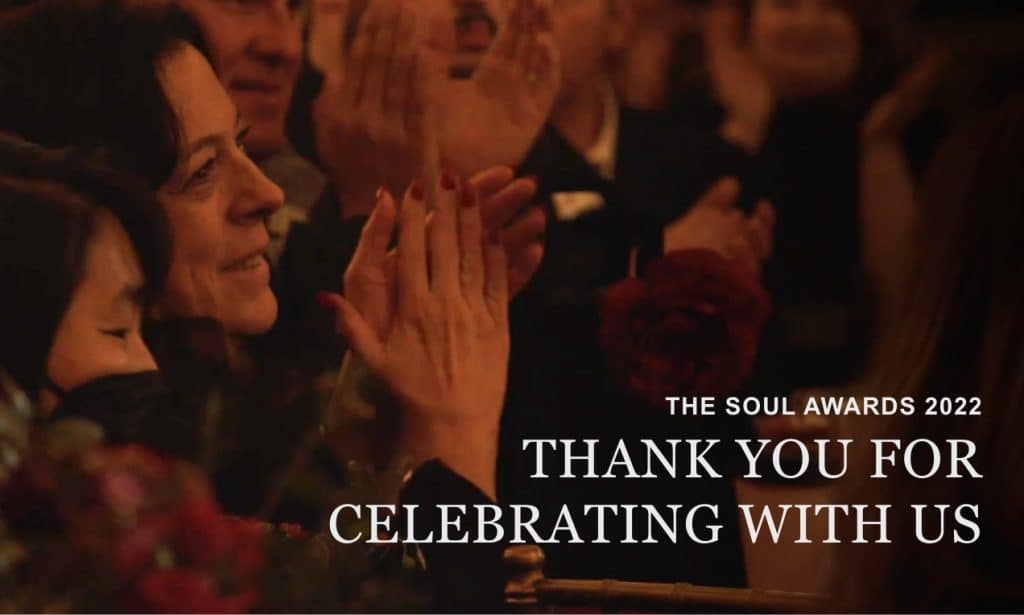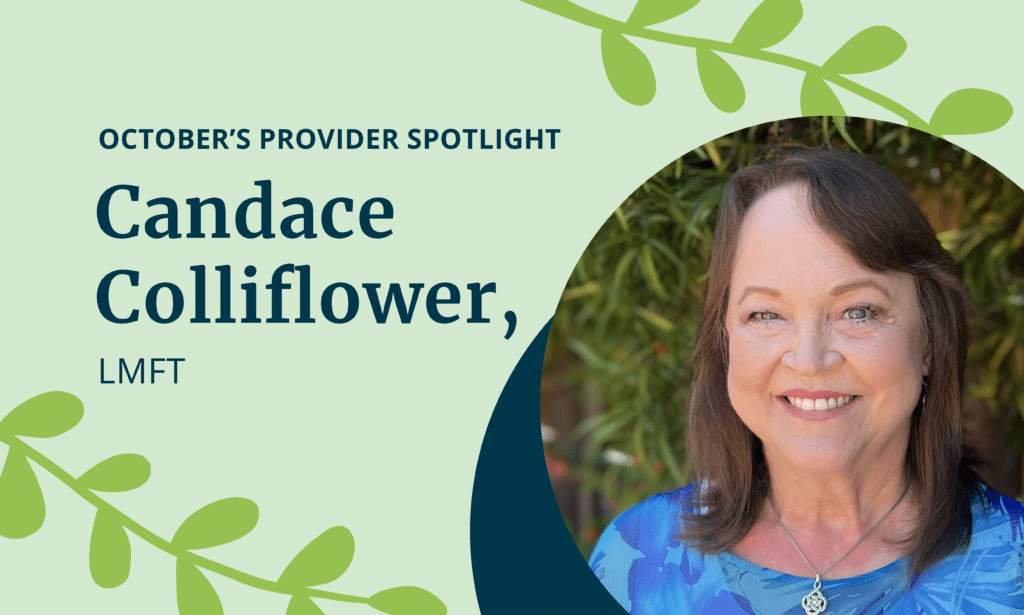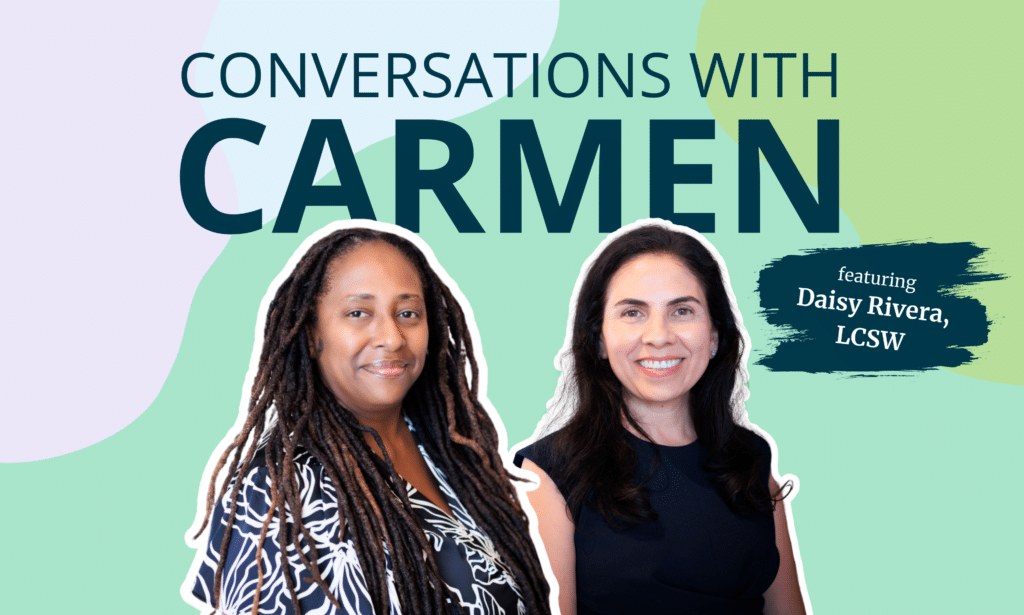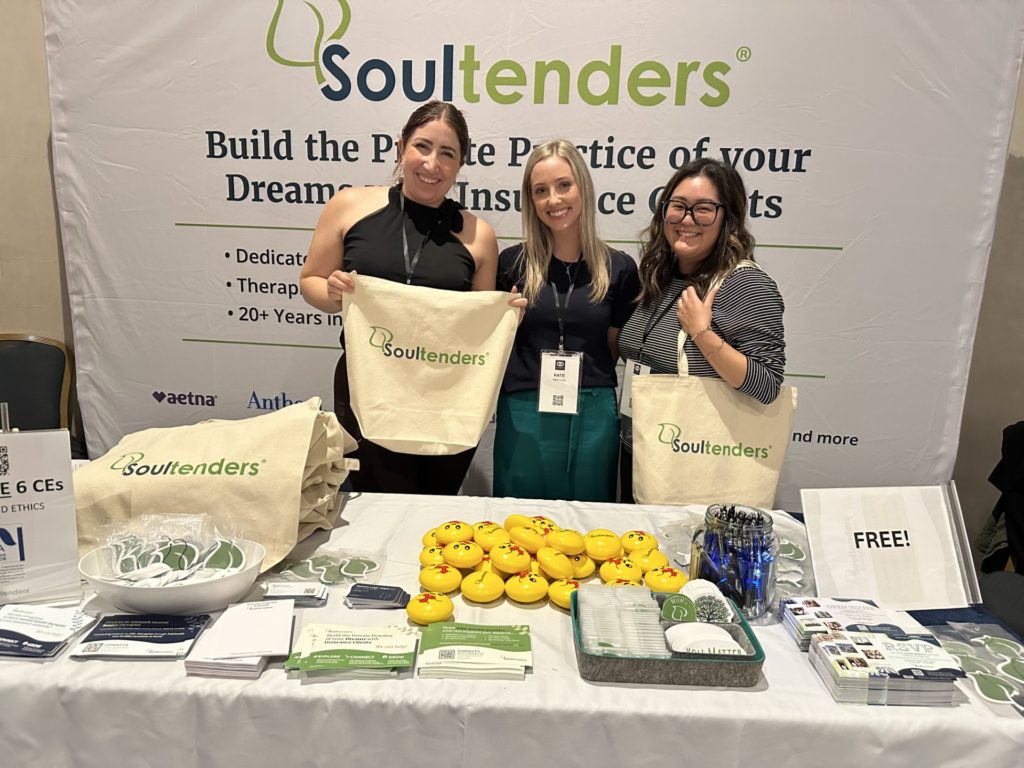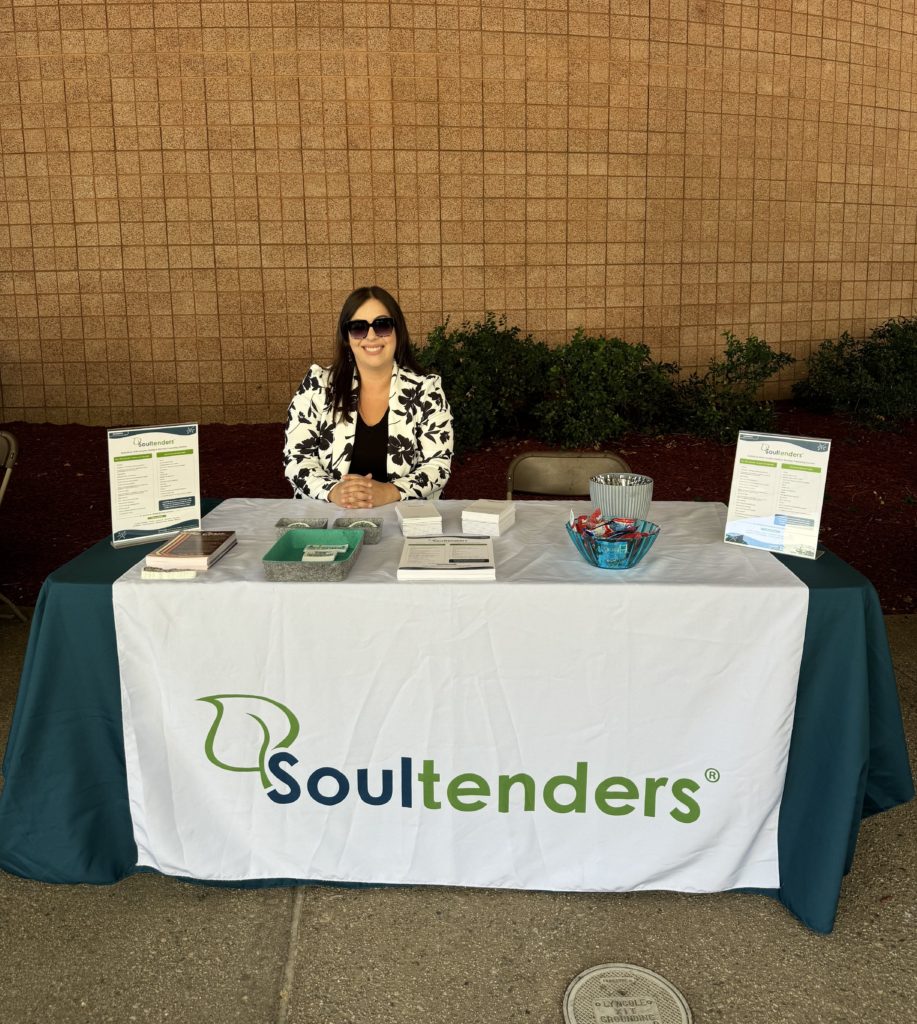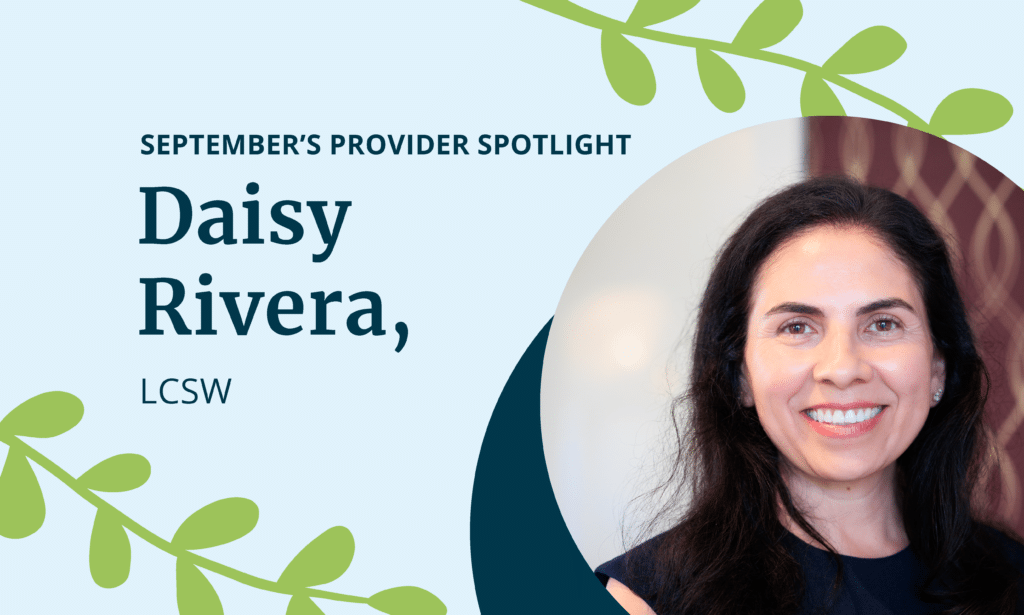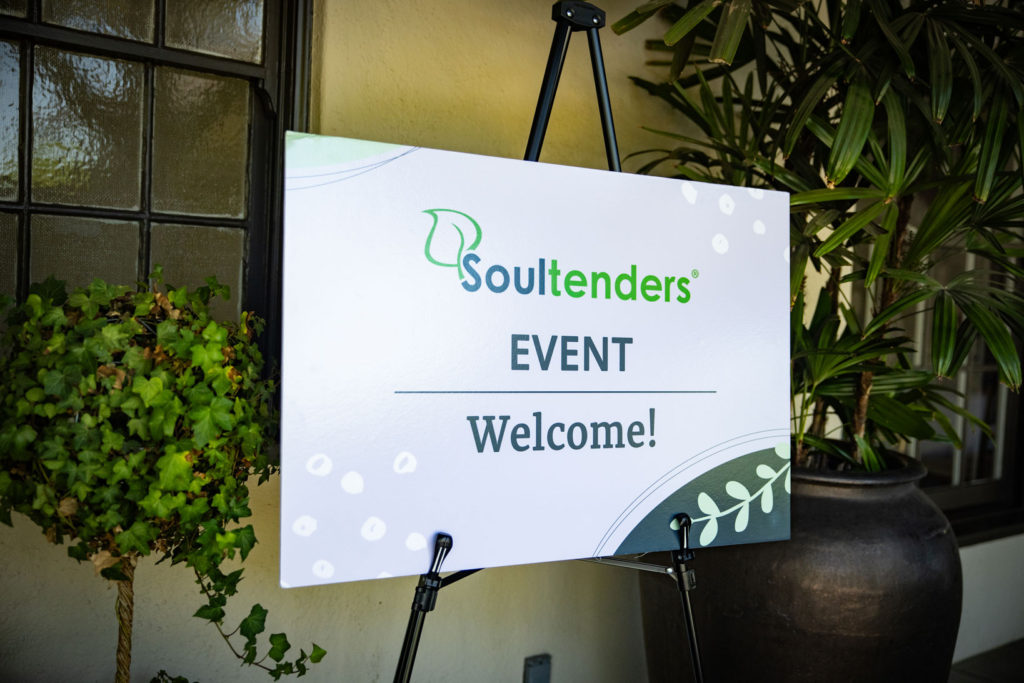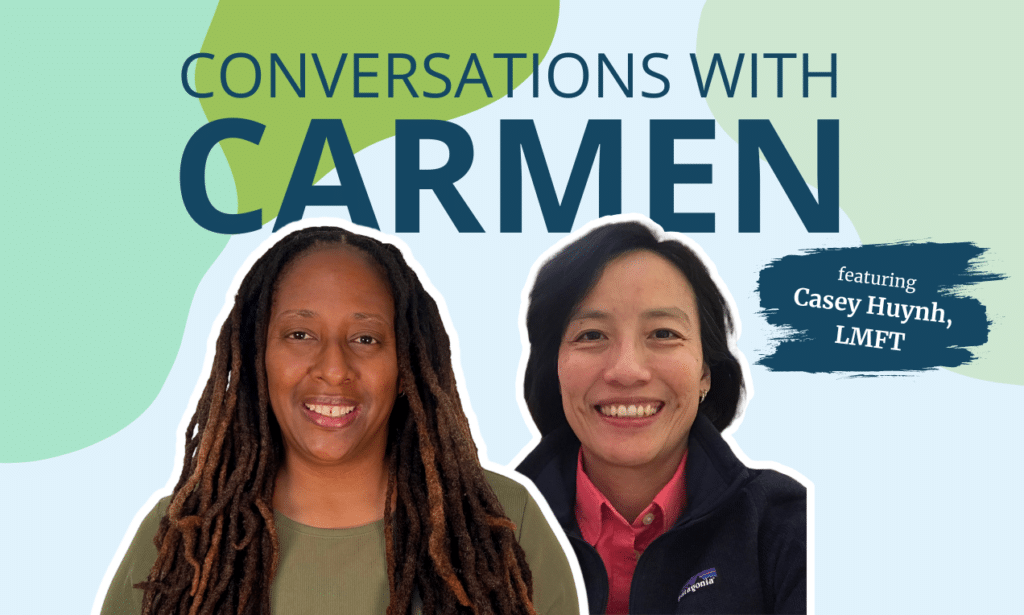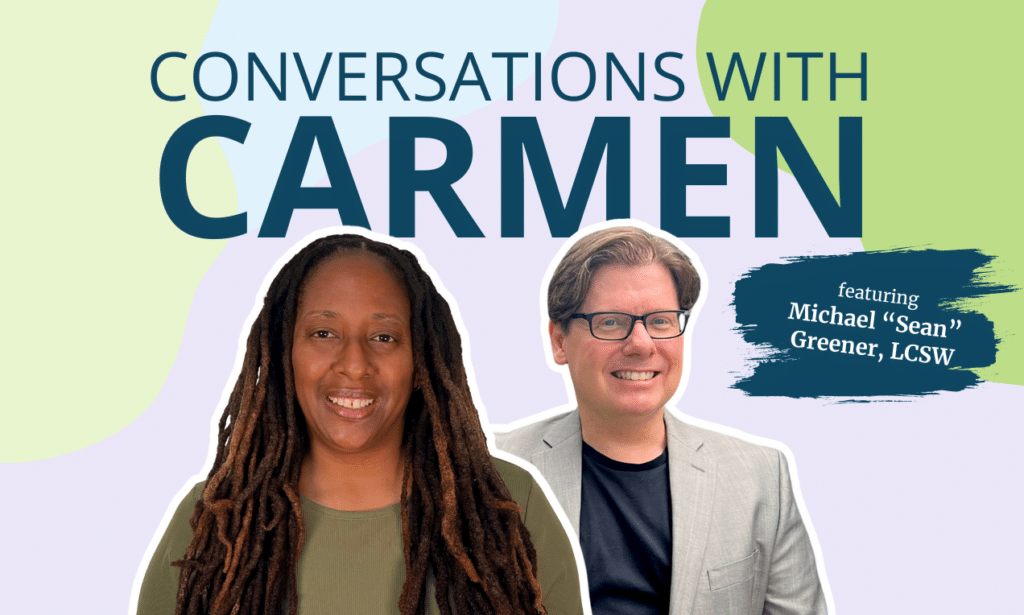
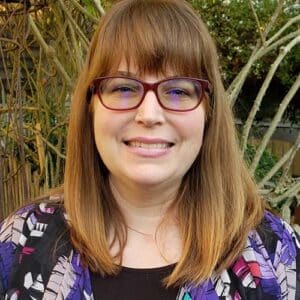
Introducing this month’s featured guest, Emma Carr! Discover captivating insights into her unique experiences and inspiring stories related to her life and private practice by reading the interview below.
You shared that years prior to becoming a licensed clinician you worked for a veterinarian in an animal hospital (while you were in high school). What was that experience like for you? At some point, was it a career interest of yours to become a veterinarian?
I loved animals growing up, and still do! So, yes this was a career path I was looking into. I was able to secure a job with a local veterinarian when I was 16 and I was mentored by that veterinarian, until I chose to make a different career move. I loved working there and the doctor, ‘Dr. O’ was very kind and a great teacher. I started out caring for the animals that were boarded up to the point of assisting the doctor in different medical procedures and doing dental work on the animals. It was wonderful and I absolutely loved that job and I have some very fond memories of this job.
At one point, you took a mission trip to Mexico where you worked with the local fire department as a firefighter. Would you say that experience is what initially inspired your interest (and achievement) in subsequently becoming an EMT as well as a paramedic?
I was very involved with my youth group, church and participated in mission trips yearly to Mexico during Spring Break in junior high and high school. After graduating from high school, I went and worked at an orphanage in Mexico for about 7 months. In this orphanage, there was a fire department, ran by a retired LA firefighter who had found agencies in California that were retiring old fire engines, equipment and gear. I took interest, because at the time, my stepbrother was very active with his fire career, and I thought “why not?” So, I joined the volunteers, who were folks that lived/worked at the orphanage. If there was a need for the fire department, the retired LA firefighter would sound the alarm and we would drop what we were doing and run to the station, yes, I said run… We would hop into our turnout gear and jump on the back of the tailgate and hold on for dear life, because mind you, the roads were not paved and would have potholes and other obstacles in the road. So, if you were not holding on for dear life, you might fall off the engine. We would respond to fires, medical aids, and lots of vehicle accidents, since we were the only department that carried the “jaws of life” for over a 20-mile radius.
Over a month or two, the fire captain saw I took interest and asked me to care for the engines and the equipment daily at the orphanage. So, I oversaw running the rigs, cleaning the equipment, ensuring new volunteers had appropriate gear and helping with any other needs for the fire department. It was truly magical! I also did other jobs, like working in the nursery, working in the Walnut and fruit fields, and care taking with the older children. It was truly a wonderful experience. When I came back home, it was my intention to continue to pursue becoming a veterinarian, until one day I was approached by the local fire chief in Cambria and asked to join the fire department, so that is when I made the choice to change careers and seeing where God would lead me. So, you could say my experience in Mexico exposed me to the fire service and sparked my interest, but I truly gained an understanding of the first responder world, once I started out as a paid call firefighter with Cambria Fire Department.
You mentioned that you derived inspiration from a previous professor of yours who was conducting research on the link between PTSD and Law Enforcement. That sounds like an amazing project. Can you elaborate on what that process was like for you? Did you participate in the research project? What were some of your key takeaways?
I don’t remember much of the experience with Dr. Sharp. I remember working with him on exploring questions that he could ask in his research, and how to measure and quantify it. Unfortunately, throughout my undergrad I underwent some significant traumas from the field, and I think that really affected my memory relating to the research he was conducting. I also only remember participating very little in the research, just because I was not a full-time student. But what I do most remember, is the deep intellectual conversations I would have with Dr. Sharp and how he took interest in me and what I was experiencing as a paramedic and just in my life up to that point.
You shared that your initial professional goal was to become a Firefighter EMT. However, at some point, you began to experience significant trauma responses subsequent to many of the client crisis calls that you responded to. Can you shed a little light on what those experiences were like for you? Were you typically able to emotionally recover sooner than not? If so, how did you usually go about doing so?
When I started with the fire department, I was considered “bottom of the barrel” because to the pre-military hierarchy that exists in the first responder world. So, the experience was “suit up, show up.” My first dead body experience was very upsetting and a “blur,” I was only 20 years old and had no idea how to deal with seeing a dead body. So, I remember sitting with my lieutenant, having a piece of pie, talking about the incident, but I still felt “confused” by all the questions and the trauma of these calls. No, one really took the time to talk about how messed up some of the things we saw out in the field. And a lot of the time, I would be responding to calls from the comfort of my home, which means you really have to be able to get in the mindset of, “ok I am responding to a call and I have no idea what it will look like.” I learned that the camaraderie you build with your brothers and sisters in the field is the most important relationship you can have, in order to survive this field. The trust, the “dark humor,” the love and the family you formulate, I felt like I belonged, and that is what really helped early on in my career.
But not all departments are like this, and when I became a paramedic and was running calls on the ambulance for a private company, I learned very quickly, I was just a “number” running calls and earning money for these calls. Which meant that when I was involved in a very serious ambulance accident that I could easily have died from, I saw how I was just an “earner” and didn’t really matter, because my boss was asking me when I would be available to start back to work, 48 hours after the incident. Mind you, I was having significant nightmares after this incident and was experiencing hypervigilant symptoms. When I chose to get away from that company and move up to the mountains and become a part of a smaller agency that had more of a family feel, I felt like I was home again, like I felt in the fire department. I felt that camaraderie and I felt like we all cared for each other. Living in the mountains really allowed me to use nature as a way of healing and connecting. On my days off, I would go to Yosemite weekly, hike, spend time with friends, push my body in new ways, like participating in triathlons and running a marathon. That helped me just manage through my time as a Paramedic.
While working in the paramedic and EMT field, you started to become increasingly aware of the reality that there was little to no resource linkage occurring for severely mentally ill clients who were released back into the community post-hospitalization. You shared that this awareness was a large part of what ultimately inspired you to pursue your undergraduate degree in Psychology. What about that journey can you share with us?
When I was working up in Oakhurst, in the rural areas, I would transport 5150s and others who were having a mental crisis. I witnessed a lot of alcohol or drug abuse and suicidal ideations. There was not much I could do as a paramedic, but I was able to offer at least a one hour “therapy session” during the transport time to listen to the patient’s story, what happened, why they felt hopeless, and I would always try to show empathy and offer hope. I remember transporting a veteran who would get triggered and I transported him a few times, and most of the time I was offering case management services. I would call his daughter, pay a phone bill, or make a doctor’s appointment for him. Many times, my co-workers would tell me they transported my “patients” because they would go on the same people experiencing their mental health crisis and wanted to talk to Emma. I knew this was a major door for me. But ever since I could remember, people have always told me I was someone they could go to and talk to. When I would go on the same patients repeatedly for mental health crises, the same story was produced. They would go to the emergency room, only to be turned away and offered very little if any resources, so pursuing mental health services just made sense to try and understand what the disparity was in mental health services.
In 2013, you decided to end your career as a paramedic and pursue your Masters degree in Social Work. Subsequent to that, your professional interest in working with the TAY population surfaced. Can you explain who constitutes the TAY population? What are some of the clinical focuses when working with this particular client population?
The TAY population is youth transitioning into becoming adults, 18 to 24 years old. I became more passionate about this population, after receiving a grant through USC, to evaluate and understand the incident that occurred at Sandy Hook and the mental health crisis Adam Lanza was in. It was a fascinating study and it offered more insight and understanding of TAY and the significant mental health changes that can happen during this time in their lives. Transitions are the biggest that stand out to me, this is a major time of transition, as well as a window where mental illness can show up. I recognized the critical time frame TAY are in and felt that clinically, this is a great opportunity to intervene, if possible, and gently guide, show up and hear them in this time of transition.
In addition to your growing curiosity about the TAY population, you also developed an interest in working with the CSEC population- survivors who have been exposed to human trafficking. What about this particular client population intrigues you the most? What were your most notable moments in time when working with a CSEC client?
When I was working on my second year of interning, I was at Covenant House California. I was offering case management and mental health services to TAY at this emergency shelter. I had a young person who was a part of the CSEC population, and I had built a strong rapport with this person. I felt I could connect and really “get” them. I was also offered trainings through Covenant House about the CSEC population. I attended monthly support groups and meetings about how to actively recognize CSEC youth and how to safely intervene. I remember attending rallies in Hollywood.
I also had an opportunity to go with a church and provide outreach to those who were actively being pimped out on the street and try to offer connection and services in a safe manner. I was later hired by Covenant House to be the CSEC case manager who has specialized training with this population. The most notable moments were when these youth felt safe with me and knew I would stand up for them, but the other notable moments were when they would exit the shelter and fall back onto the streets. Sometimes the same clients would come back several times, and I tried to ensure I was there when they came back. They need people to show up for them, no matter how many times they go back to the life, then want to get out of it again.
In early 2020, you stepped into the role of Program Manager at The People Concern. Very shortly thereafter, we found ourselves faced with navigating a pandemic. Even though the PM role was somewhat short lived, what were some of your key takeaways from that experience? Did the role prepare you for private practice? If so, in what way(s)?
I worked as a PM for a little over 1 year and I loved the work and the agency. I really felt cared for and the training to become a PM was amazing. I really was able to gain good managerial skills and I had great support in helping me develop my manager skills. I loved being a leader of a team and really felt I found a progressive role for me to grow in. When the pandemic hit, I found so much of the roles of the outreach teams really shifting, where the department of health services, which we were primarily funded through measure H. DHS wanted us to test weekly for COVID with our clients and then when the hotels opened to house some of the most vulnerable, my team felt this huge push to get everyone off the streets. It just felt discouraging that a pandemic accelerated getting the most vulnerable off the streets, when sometimes these were the hardest people to get housed.
My team and myself, and I think a lot of the agency, just felt this huge shift that really questioned how money was handled for aid with those experiencing homelessness and the medical field. Weeks turned into months where we would visit the same areas where the most people flocked together to live, and we had to test for COVID, and track the numbers and report our findings and get the person isolated if they tested positive. It just was such a drag really. We lost focus into how to get this person all the services they needed, and the pandemic was the biggest barrier of all.
I remember being home, pregnant, and not able to be out on the street very much, even though towards the end of my pregnancy, I went out in the field often and just took extra precautions to be with my team and help them through this difficult time. Also, the clients really needed the extra support. Once I had my daughter in September, there was no way as a single parent, I was going to go back on the street and expose my child to COVID, so I had to really dig deep and make a hard decision to get out of community mental health services.
In late (November) 2020, you decided to relocate back to your hometown of Cambria, CA. I’m aware that Cambria is a seaside village in San Luis Obispo. What are some interesting facts about this community? What do you enjoy most about living there?
Cambria has a population of about 6500 people. It is predominantly a place where many come to retire in this vibrant community. It is made up of many artists and musicians which really colors this town. Arachnophobia was filmed here in the late 80s/90s and fun fact they released the spiders here IN CAMBRIA! But this is where I grew up and there are a lot of families here too. I remember my friends in high school complaining that they had to drive 45 minutes just to go clothes shopping or go see a movie, and I just felt so fortunate to live 5 minutes from the beach, where I could hunt for moonstones. Cambria is right next to Hearst Castle, which most people have either heard of or been to the castle. On the way to the castle, you are guaranteed to see a field of zebras which is another attraction we are famous for. Zebras next to the sea! It is truly a special place, and it has a small town feel, which means everyone knows everyone and that can either be a good thing or a bad thing! But I love it here.
You shared that your journey with Soultenders began in November 2020 as well. What was the transition from community mental health to private practice like for you? You were also a brand new mother during this time. How would you say all of the moving parts involving motherhood, career pivoting and relocation came together for you?
I have always had my long-term goal be private practice, but maybe not as soon as it happened. But I couldn’t be more grateful for being hired by Soultenders during this major transition in my life. I was a new mother, single, realizing that I will have to move back closer to my parents in order to get help, all the while figuring out how to have my own private practice. It was overwhelming at times, but I don’t think I would change any part of it. Being a mom was something I didn’t want till my early 30’s, and when I became one, I knew this is what God wanted me to do. I was lined up with a career that I could grow and I really leaned on the people who helped me create that career.
Tammy was such a huge help with weekly consult meetings that would consist of just the two of us for the longest of times but was great in order to really just gain knowledge about the agency and how to do this private practice stuff. Cecilia was a wealth of knowledge and a strong source of navigating my way with my practice and becoming an EMDR therapist. Cecilia grabbed my hand and showed me what EMDR training can do for my future, and I ran with it. I am grateful to both strong clinicians who have helped me develop my backbone in the private practice service.
I also have to give myself credit, because I had to do a lot of trial and error and many hours of youtube as I worked on formulating my own private practice in March of 2021. Some of the most beautiful things about this transition was how so much fell into place and there would be this sense of peace and just fulfillment, knowing this is where my life and career is meant to go, for me and my daughter to be successful long term.
Since 2020, you have cultivated a dynamic private practice that primarily focuses on working with First Responders. And part of your clinical expertise includes providing CISM (Critical Incident Stress Management) Team. Can you elaborate on what being CISM certified means? What is an example of a scenario in which being CISM certified would be an absolute must in order to effectively intervene and support others?
I am a part of the San Luis Obispo County Critical Incident Stress Management team. When there is a critical incident that impacts the community as well as the first responders that attend to this critical incident, the CISM team is dispatched if requested by the agencies involved in these incidents. The team consists of first responder peers, chaplains and culturally competent clinicians. The team is trained in debriefing techniques that encourage those who have faced significant trauma, process it through within 48 to 96 hour or less when an incident has occurred.
The most recent incident I attended was when a young 5 year old boy was swept away by a river here locally during the major storms in the beginning of the year. We focused on debriefing the crews initially dispatched to the incident who were performing the swift water rescue and those who were on body recovery. These types of debriefs can be very intense and it really is just coming from a place of empathy and understanding that everyone’s experience of the event is different and each person can be affected in different ways and really finding ways to work with people on normalizing and validating their experiences. It’s pretty amazing when you can tell a first responder that it is totally normal and ok to have a certain response to a call, like anger and intense sadness, and see the relief that washes over them to know they are not “weird or something must be wrong with me.”
You’ve described your practice as “trauma informed”. What does this mean to you?
Being trauma informed, means that I generally look at and explore my clinical caseload with the lens of trauma. I remember reading about how we can approach severe trauma from a stance of what happened to you and how can I stand alongside you? Versus, what’s wrong with you and this is how you get over it. It has really allowed me to not only heal from my traumas but allow me to show up and help my client’s heal, on their terms, and at their own pace. I tell all my EMDR clients, it’s not a sprint, it’s a marathon!
As a trauma informed provider, your vast/extensive experience with front line workers and (often co-occurring) PTSD, position you well to provide individually tailored clinical support and psychoeducation to First Responders attempting to navigate and process corresponding guilt, grief as well as shame. In addition to supporting your clients as they confront these experiences, you provide a safe space for them to potentially explore their own unique struggles surrounding the biases and preconceived notions that society often has of them as professionals. How do you cultivate that kind of space in your practice? What theoretical orientations have you found that promote doing so?
First responders have a keen ability to determine, usually within minutes, if someone is lying or truthful. This is a safety skill one must develop right away in this field, because it could cost one their life. My approach with first responders is I don’t “bull shit.” I try to be as transparent and honest from the first conversation I have with them. I acknowledge that getting help from a stranger is very scary, and validate that they are making the right step, because usually I get contacted by first responders when their life is falling apart right in front of them.
I come from a space of having real conversations, they want to know what is in front of them, they don’t want to be treated with “kid gloves.” Often I will share that I was once a first responder, and I can relate to experiences they may be facing. When I do share, I see that sense of relief within them, and that they don’t have to hold anything back with me. Because I can handle the really bad call that they just saw two days ago.
Also, I use humor a lot, we all need to laugh, even when it is really bad. Is there a theoretical orientation to describe this? Maybe I just don’t know. The theoretical approach I have is trauma informed, and that seems to have benefited me with all first responders and those who I work with, who are not first responders.
Undeniably, your clinical work is vastly important, intense and challenging. With that in mind, how do you find the balance? What does self-care typically look like/consist of for you?
This is a great question and oftentimes fluctuating. My daughter is a great healthy distraction, and I really try to find ways to get outside and enjoy what is around us. The joy and happiness on her face really fills my soul and allows me to feel replenished. I am also really good at compartmentalizing, but when I feel countertransference from a client, I ensure I discuss it in consultation. I attend consultation group regularly and I have a few colleagues I have on speed-dial, who I can talk to. I have a great group of friends, who are supportive. I attend church regularly to help with my spiritual growth. I have my own therapist who is wonderful who I’ve worked with for several years now. I make sure to get outside and connect to the sun and beach. I also have all my family locally who are huge supporters and where I spend a lot of quality time with.
Is there anything else you would like us to know about you?
I’ve played a musical instrument since I was in the 5th grade, and I currently play the viola. Yosemite is my sacred sanctuary, I feel the most alive when I am there. I have run 1 marathon, a few ½ marathons, and several sprint triathlons. I’ve hiked Mount Whitney in one day! I love hiking, backpacking and camping is my go-to vacation of choice. I love to travel and I have been to Mexico, several places in the US, Costa Rica and my most recent trip, pre-pandemic was Sweden. I love cats, food, the color green and orange! Just some fun facts about me.
Is there anything else that you would like to share about yourself?
Not really, haha! Being a therapist and a mom/wife is my life!

